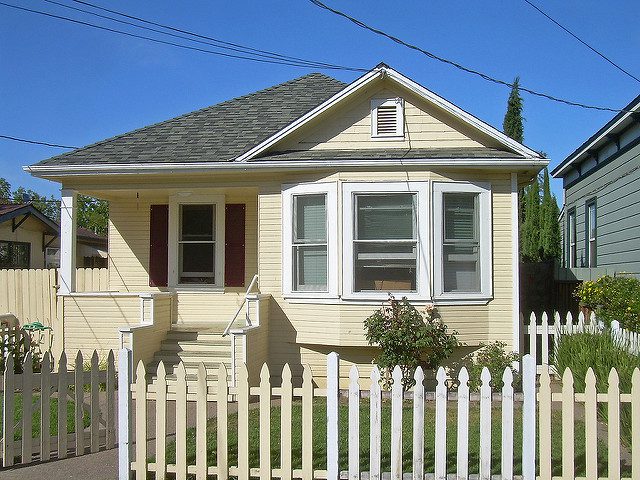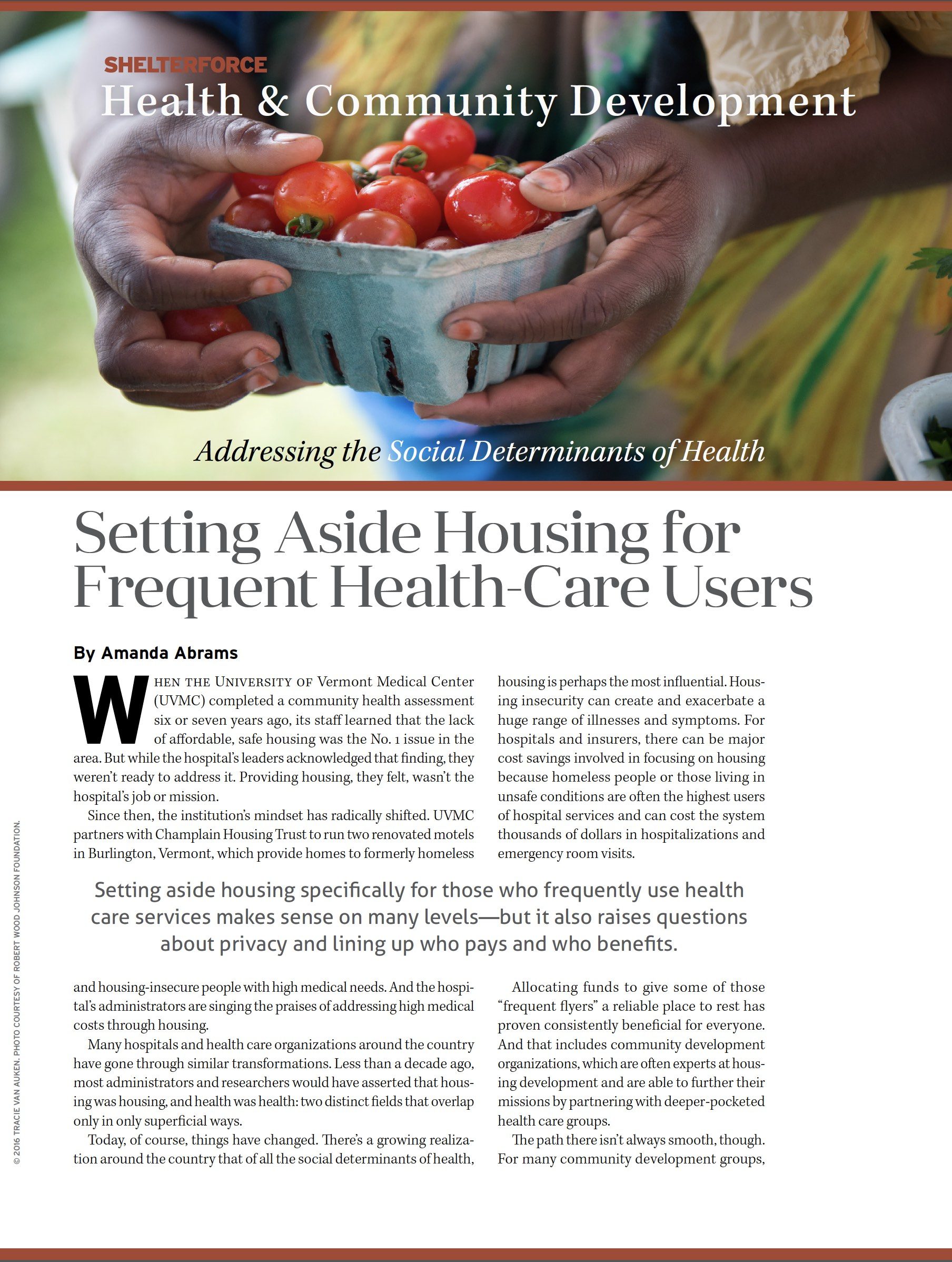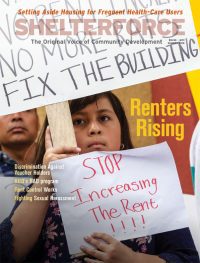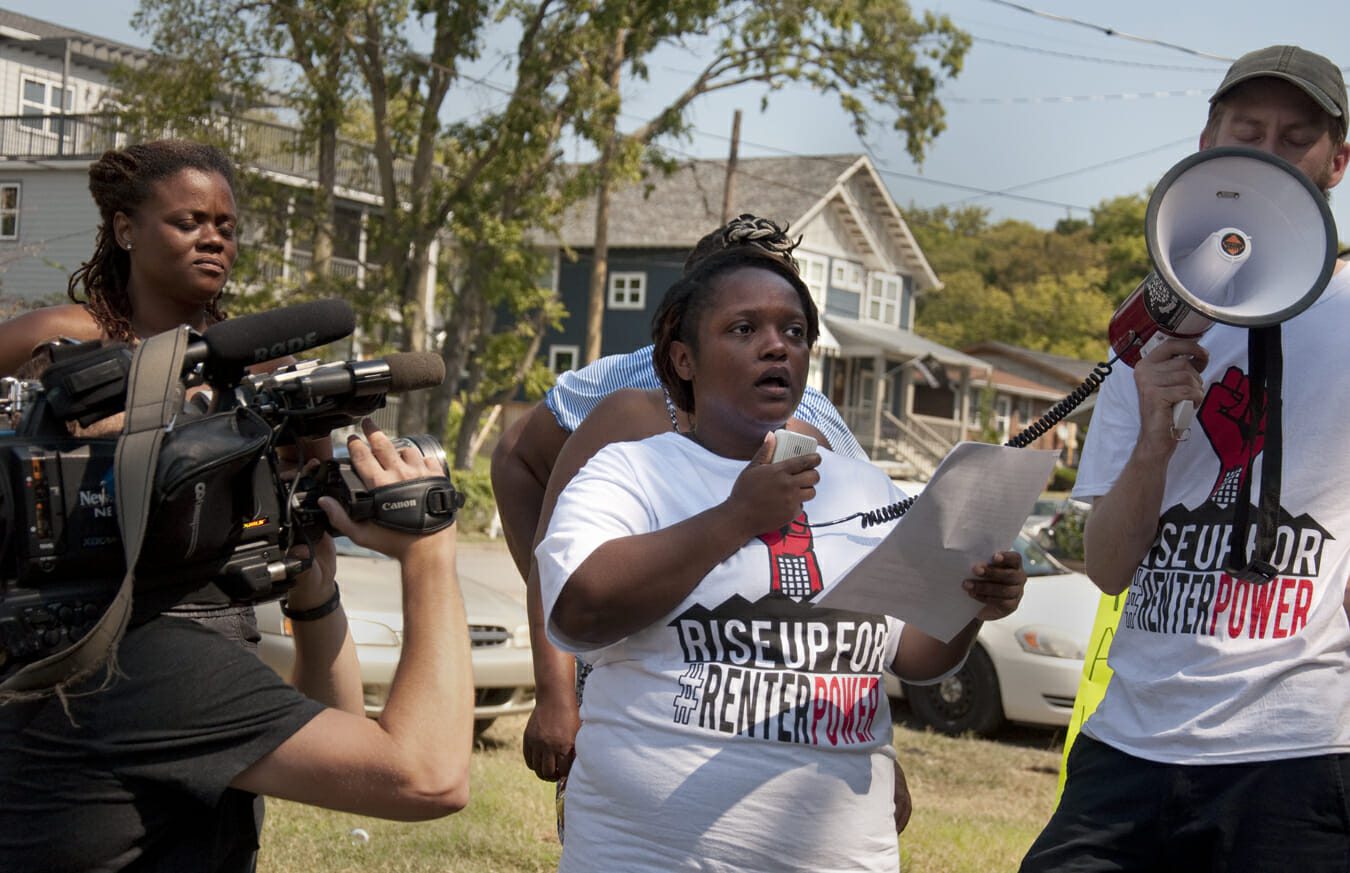In 2011 single-family home prices hit a two-decade low, and mortgage rates were as low as they had ever been. Imagine if we had taken that opportunity to get as many families as possible into homeownership, enabling them to take advantage of unprecedented affordability and to start building wealth as the economy emerged from the Great Recession.
Just think: The U.S. Department of Housing and Urban Development (HUD) could have used the vast numbers of properties it owned as a result of the foreclosure crisis (also called “real estate owned” or REO properties) to create an at-scale affordable homeownership or lease-purchase program. Similarly, the Federal Housing Finance Agency (FHFA), as conservator of mortgage giants Fannie Mae and Freddie Mac, could have created a program to sell REO assets to low- and moderate-income owner-occupants only, or, if the homes were not in move-in condition, sell them to local, mission-focused developers who could rehabilitate them for local buyers.
But that’s not what happened. Instead, these assets were sold—often at fire-sale prices—to the wealthiest financiers in the country. Consequently, millions of foreclosed homes, including hundreds of thousands of those owned by HUD, or Fannie and Freddie—both backed by the taxpayers—became part of one of the biggest wealth transfers from the middle class to the rich in our nation’s history. One industry commentator described this period as “arguably the biggest land grab since the Manifest Destiny.”
How Did We Get Here?
During the crisis, America’s homeowners lost $17 trillion of home equity, and millions—perhaps as many as 10 million—lost their homes entirely. But homeowners didn’t get back all that equity when the market recovered. Instead, a significant portion of the gains went straight to the private-equity funds and other corporate investors who bought low and sold high or are still holding properties as single-family rentals.
While numbers are difficult to come by due to the lack of a federal data collection structure, by any calculation a huge number of formerly owner-occupied homes have landed in the hands of an investor. For example, Zillow estimates that 5.4 million single-family homes transitioned from owner-occupied to rental between 2006 and 2017. During approximately that same period of time, the national homeownership rate declined from 69 percent to around 64 percent.
The Great Recession was not, of course, the first time investors had purchased a lot of single-family homes during a housing turndown. Historically, investors have played an important role in putting a floor under declines in home prices, and in this case, these purchases helped break something close to a free-fall.
Unlike in previous cycles, however, these investors didn’t resell once prices had recovered. Instead, investors in the market have stayed, creating a new asset class of large, scattered-site, single-family rental portfolios. It turns out that with rents in most parts of the country at all-time highs, the economics of single-family rentals are extremely favorable to investors, more so than buying, rehabbing, and flipping.
By competing with potential homeowners and reducing the available supply of affordable homes, this ramped-up investor activity in the single-family market has helped lock in the crisis-driven reduction in homeownership even as family incomes and employment have recovered. While single-family rentals have always been a large part of the rental market (albeit often overlooked by policymakers compared to apartment rentals), data shows an unmistakable uptick since the crisis. Today, more than half of all renters now live in single-family properties, and almost one-fifth of all single-family properties are occupied by tenants rather than homeowners.
Who Are Today’s Single-Family Rental Landlords?
In the 2018 single-family rental market, many landlords are not the so-called mom and pop investors who previously dominated the market. By way of definition, this category of landlord has typically owned 1 to 10 properties either in their own neighborhood or in a nearby community. These landlords often serve as their own property manager and/or general contractor, and for the most part, they personally oversee the decision to rent to any given tenant. The quality of such landlords varies widely, with some being extremely responsible and others clearly fitting the description of “slumlord,” but for the most part, their tenants know how to reach them and have at least the possibility of talking or even negotiating with them.
While the vast majority of single-family rentals are still owned by individual investors with small portfolios, the profile of these investors has changed. Due in large part to technological advances, small investors can now access properties that are thousands of miles from where they live. In fact, many single-family landlords live outside of the United States. These distant absentee landlords are much less likely to have a personal relationship with their tenants, and most rely exclusively on property managers— including national operations such as Renter’s Warehouse—to manage their holdings.
But increasingly, the new breed of landlord is a private equity fund, a real estate investment trust (REIT), or another participant in the large capital markets. It is well known that large, institutional investors, such as private equity fund Blackstone (the parent company of Invitation Homes), scooped up hundreds of thousands of homes at bargain-basement prices after the crisis. It is perhaps less well known that these same large institutions are financing many smaller operations in business-to-business arrangements.
The large institutional investors are heavily concentrated in moderately priced, middle-class suburbs with good schools. The private REITs and smaller investors focus on homes in the lower-priced markets, which would make sense for organizations that operate under fewer constraints than large public companies and have less reputational risk. In these markets, the continued shortage of affordable rentals enables them to charge rents almost as high as those in stronger markets, but for properties that are considerably more distressed in areas where acquisition prices are lower and there is less pressure to invest in fixing up the property.
Landlords of all sizes often invest through a limited liability corporation, which is often used to shield the identity of a particular investor. A recent example of a wealthy, private individual using LLCs to purchase real estate is Sean Hannity of Fox News.
What Factors Drive Today’s Single-Family Rental Market?
The single-family rental industry is fueled by factors that relate to what some have called the “financialization” of housing. This term describes the increased dominance of the housing market by companies on Wall Street or other sophisticated participants in the capital markets who view housing as a generic asset to trade or hold.
[RELATED SERIES: Homes or Cash Cows? An Under the Lens Series]
These investors make choices on the basis of spreadsheets and quarterly profits. They have no mechanisms to factor in a family’s need for housing as a source of shelter, stability, or wealth-building, or to consider the role of housing type and availability in the array of social and economic policies that underpin healthy neighborhoods, nor do they have any incentive to consider the effect of their investment strategies on families or neighborhoods.
Factors that support the new single-family rental market include:
Single-family rental securitization: Beginning with Invitation Homes’ first securitization in 2013, single-family rentals are a $15 billion bond market and growing. This financing mechanism provides a deep pool of inexpensive funding for large players to fund additional purchases or to finance purchases by smaller entities.
Fannie Mae and Freddie Mac financing: Historically, one limit on the growth of single-family rental portfolios was the low number of mortgages that Fannie Mae or Freddie Mac would back for investors using single-family mortgages to purchase them. However, that all changed last year when Fannie Mae decided to back single-family rentals through its multifamily channel instead, which it initiated by providing $1 billion (not a typo) of financing to an Invitation Homes deal. After some negative public reaction to using taxpayer backing to assist the second largest private equity fund in the world, the Enterprises changed course to focus on smaller deals in this area. This year Freddie Mac rolled out a product to finance midsize single-family rental portfolios. As with securitization, companies that can access Fannie and Freddie benefit from what is essentially a subsidy that reduces their costs of operating in this market.
The 2018 tax bill: Tucked unobtrusively into this year’s tax legislation is a provision that supercharges the tax advantages available to investments in REITs, including those engaged in single-family rentals.
Nonperforming loan actions: HUD, Fannie Mae, and Freddie Mac have chosen to sell large pools of nonperforming loans to investors even before those loans go through foreclosure. Buying the mortgage rather than waiting for a home to be listed publicly allows large, financially sophisticated investors to get control of the homes without ever competing with potential owner-occupants. Because these mortgages are sold in large pools that require lightning-speed due diligence on hundreds or thousands of loans, only large investors can typically compete. (While HUD and the Enterprises have established smaller, nonprofit-only pools, these represent only a couple of percentage points of the total numbers sold.)
Online real estate auction sites: Websites that enable investors to purchase homes online are used by virtually every REO seller in the industry and are increasingly being used by municipalities in lieu of auctions on the courthouse steps. These sites enable virtually anyone around the globe with cash and a laptop to buy real estate anywhere, anytime. Investors can use these sites to source low-value properties on the cheap, either collecting rent payments until the home falls apart or simply waiting until home values rise to flip them.
The Implications of the Sector’s Growth
While the growth of this asset class is a boon for a lot of people in the industry, from rental operators, to LLCs, to securitizers, to bond investors, it raises serious concerns for aspiring homeowners, tenants, and neighborhoods.
Continued investor interest in single-family rentals has contributed to the current inventory shortage of houses appropriate for middle-class, low- and moderate-income, and first-time homebuyers. In short, investors crowd out aspiring owner-occupants. They often pay in cash and find homes through outlets that the typical homebuyer has no familiarity with, ranging from “off market” or “pocket” real estate listings, to purchasing homes in foreclosure or tax sales, or purchasing mortgages prior to foreclosure. The larger investors compete with homebuyers in the stronger markets, while the smaller ones compete with homebuyers, community development corporations, and nonprofits in the weaker, more affordable markets.
Additionally, evidence is mounting that many of the new breed of investors treat tenants worse than the old-style mom-and-pop landlords. As noted above, especially in areas where the housing market has not fully recovered, record-high rents and a shortage of units enable investors to rent out distressed properties without any market pressure to repair them. Along with a failure to rehab, owners of distressed properties sometimes pass off their responsibility to maintain rental units onto the tenants under the guise of predatory products such as “rent to own” schemes. Even investors who focus on properties in middle-class neighborhoods still engage in sharp practices such as “charge-backs,” where tenants ultimately are required to cover the cost of certain repairs to the house.
Along the same lines, investors are under constant pressure to raise rents as high as possible, especially if they are a public company or participating in a securitization. It also appears that investors may be more likely to evict their tenants. In one of the few studies of this issue, the Federal Reserve Bank of Atlanta found that these investors were 8 percent more likely to evict tenants in the Atlanta area than smaller landlords.
Beyond those issues that relate directly to homebuyers and tenants, the growth of the single-family rental market is also affecting neighborhoods. While many renters are extremely responsible stewards of their homes, the transition of a neighborhood from homeownership to rental often parallels a larger pattern of disinvestment in that neighborhood. Unlike mom-and-pop investors who often live in the same city if not the same neighborhood as their properties, Wall Street landlords or wealthy investors from foreign countries rarely contribute to the local economy beyond the properties themselves, nor do they engage in local philanthropic activities.
We have yet to understand the full impact of investor ownership on home values over the long term. The SEC has reportedly opened an investigation into whether appraisals for single-family securitizations have been inflated to increase the value of the bonds. Ironically, institutional investors have also often petitioned local governments to reduce their tax assessments—so they may be changing their value assessments based on audience.
It is hard to track a particular type of investor’s effect on neighborhood values when figuring out property owners’ identities is so difficult. And, if a downturn comes, there is the possibility that investors exit the market en masse, either releasing liens on their low-value properties (leaving the vacancies and blight for the local municipalities to deal with) or selling in bulk to other third parties, thereby putting significant downward pressure on home values in those neighborhoods.
What are Some Ideas to Ameliorate These Negative Effects?
Given the scale of the ownership-to-rental transition, reversing this trend may be out of reach. However, a number of policy interventions could make a meaningful difference for potential homeowners, tenants, and neighborhoods. Some ideas are:
Prioritize homeownership outcomes for foreclosed homes owned or insured by taxpayer-backed entities. FHA, Fannie Mae, Freddie Mac, and other public entities such as state housing finance agencies should prioritize homeownership when they sell REO properties or distressed mortgage notes. While most of them currently offer some kind of “first look” to homeowners when they list the properties on the Multiple Listing Service (MLS), it is important to enforce those provisions, as there are many stories of brokers gaming the system to sell to favored investor clients.
Lower-value homes and homes in distressed neighborhoods are much more likely to be bought by investors. The best way to break this cycle is to get those high-risk properties into the hands of mission-focused, local entities that rehab properties and work to promote homeownership. To do so, they can leverage the National Community Stabilization Trust REOMatch platform, individual nonprofits, or municipal resources such as land banks.
Finally, any entity selling distressed mortgages should set guidelines that prioritize homeownership as a final outcome, either by keeping existing homeowners in their homes through loan modifications or by ensuring the sale of the property to a new owner occupant. Doing so will require a more robust system of enforcement than currently exists. One way to help achieve appropriate outcomes is to structure the sales so that they are more accessible to municipalities and homeownership-focused nonprofits, whether through “last look” provisions where nonprofits can beat bids from investors, or through appropriately priced direct-sale arrangements. Fannie Mae recently put this provision in place for its Community Impact Pools; Freddie Mac and FHA should do the same.
Provide financing for rehab and resale of distressed properties to homeowners. One of the easiest ways to ensure that potential homebuyers compete on a level playing field with investors is to provide mortgage products that allow for the extensive rehabilitation work that is often required in distressed markets. For this reason, FHA, Fannie Mae, Freddie Mac, and state housing finance agencies should continue to improve their offerings of products such as the FHA 203(k) or the Fannie Mae HomeStyle Renovation mortgage. Right now, relatively few lenders offer these products, certain features of the loans make them difficult for the typical homeowner to manage, and public awareness of their availability is low. Fortunately, Fannie Mae has chosen to pursue improving these products as part of its Duty to Serve plan.
However, most homebuyers will have neither the skills nor the time to manage significant renovations or handle complex mortgage products. Instead, this work could be done by the hundreds of mission-based nonprofits and developers with the skills to acquire, rehab, and sell distressed properties. Like potential homebuyers, these groups lose properties to cash investors who do not work to improve either the house or neighborhood, so leveling the acquisition playing field is important. But these groups also need access to financing for their work. For this reason, Fannie Mae, Freddie Mac, and FHA, along with state housing finance agencies, should support the development of financing products that nonprofits can access for their acquisition and rehab work.
Yet even with the most skillfully targeted rehab financing products, this sector still faces a key obstacle: in markets where home values remain depressed due to a preponderance of distressed sales (foreclosures and short sales), the cost of acquisition and rehab often exceeds the fair market value of the property. This problem—known as the appraisal gap or value gap—is part of why the economics are better for single-family rentals in these markets than for homeownership. The only way to solve this problem is through some form of subsidy, and the funds available through explicit government grant programs such as HOME or CDBG are extremely limited in both amount and use.
A policy proposal with the potential to make a significant change in this dynamic is the Neighborhood Homes Investment Act, which would encourage private investment in these struggling markets by providing a tax credit to make up the difference between the rehab/construction costs and the fair market value. Like the Low-Income Housing Tax Credits or the New Markets Tax Credit, this credit would be administered on a state basis and could only be accessed when the completed home was used for homeownership.
Condition single-family rental financing products on good landlord practices. If Fannie Mae and Freddie Mac are going to finance single-family rental, they should work with single-family rental operators whose core organizational mission is to provide affordable housing and advance community development. They also should condition any support for investors in single-family rental portfolios on responsible behavior in the market. Any financing provided should, among other things, prohibit the use of predatory products such as land contracts or sham “rent-to-own” arrangements, require landlords to accept housing vouchers from families fortunate enough to have them, and provide a range of other tenant protections such as those described in the next section.
Enact better laws protecting tenants. At the state and local level, as rents reach their highest levels in memory and tenants lose personal relationships with landlords, policymakers should step up to the plate and pass much better landlord tenant laws in states where those laws are weak. Investors specifically target states with weak laws because it is much easier to evict tenants or to evade repair responsibilities. Examples of important protections include good-cause eviction, non-discrimination based on source of income, permitting tenants to place their rent in escrow when repairs aren’t made, and giving adequate notice before terminating a lease or raising the rent.
Collect and analyze data to identify problems and solutions. A perennial problem for policymakers is the lack of data to support evidence-based policymaking. This problem is particularly acute when much of the activity occurs in the purely private capital markets with lightly regulated entities. In short, the single-family rental market tends to fly under the regulatory radar. There is no equivalent to the Home Mortgage Disclosure Act (HMDA), which collects information on mortgage lending.
One new initiative that could prove valuable is the Eviction Lab Database project, spearheaded by Matthew Desmond, the author of Evicted: Poverty and Profit in the American City, which tracks state and local eviction data. However, this aggregation effort is only as good as the underlying data, and it is critical for courts to begin to track what types of landlord are bringing eviction actions so the database can sort on that basis.
Good housing policy decision-making requires analysis and goal setting across the entire housing sector, including homeownership and both single-family and multifamily rental. Until now, the single-family rental sector has not gotten much attention from policymakers in part because it is often considered unsubsidized (although, as I argue above, it has actually been heavily subsidized) and in part because most of the active investors are less regulated and less transparent than either mortgage lenders or the leading multifamily developers and operators. Policymakers should make a greater effort to understand this market, collect data from its participants, and take affirmative steps to prevent the workings of this growing market from undermining other important housing policy goals.
Editor’s Note: This article has been updated to correct an editing error and a typo. The following sentence was updated: “The SEC has reportedly opened an investigation into whether appraisals for single-family securitizations are being inflated to increase the value of the bonds–which if actually happening is because institutional investors often petition local governments to reduce their tax assessments on the properties at issue.” Also, the article incorrectly identified the amount of wealth homeowners lost during the housing crisis. American homeowners lost $17 trillion of home equity.







So many truths told here. The dismantling of homeownership in the U.S. is upon us…we must ask ourselves what does this mean for future generations—if homeownership is not a wealth-building strategy for middle income Americans any longer, what else is? Access to the 1% is officially denied.
A useful article but you really need to cite sources when you make statements like “America’s homeowners lost $7 trillion of home equity, and millions—perhaps as many as 10 million—lost their homes entirely.”
Super glad you flagged for me that the sources weren’t linked here, because I noticed a major typo—the wealth lost was $17 trillion not 7! One economist who has focused a great deal on quantifying the foreclosure crisis is William Emmons at the St. Louis Fed. You can see these two pubs (among others) for the stats I used.
I will see if Shelterforce can add these links.
We corrected the typo and added the two links to the article. Thanks!
This is a phenomenon we’ve been struggling with for years on a neighborhood level. With 12,000 single family homes, one company has bought, rehabbed and rented 800. As you said, the economics for rental work better than rehab for sale. We continue to try to figure out how to tip the equation to to home ownership. We have initiated a home ownership campaign that has raised the level of owners purchasing. And, every rental home that comes on the market — we offer counseling to help the tenants buy it. We wish the response was better, but it works sometimes…..Frayser CDC, Memphis, TN
Respectfully, I encourage you to submit this to other outlets to reach a much wider audience. A friend posted this on Facebook, and it showed up with a somewhat uninteresting title and photo. I actually clicked on it to see why she would post something that looked so unclickworthy! But it’s a great article and I learned a lot. I’d love to see it reach more people who are unaware of the phenomena you’ve brought to light in your article.
The government/fed could have paid off every mortgage in the country in 2009 for 11 trillion dollars, that was the total mortgage debt back then, it would have been cheaper by far to have this jubilee than what they did instead, and as a result housing costs have skyrocketed without that impacting raises people get because housing costs are not directly reflected in the CPI. How they can claim over the last decade we had deflation or very little inflation when people like me in this relatively rural Oregon rental market have seen our rents climb by 90% since 2013/14 is just astonishing.
I saw in 2007 a new subdivision here that was selling three story townhouses for $275k and told the agent showing them to call me when they hit 150K and sure enough the next year I got that call. I bought one for $129,900 in April 2008. I am a disabled vet and my income then was not bad, I could well afford the mortgage payment, but I am well off for income but not enough to have a savings account, and as a vet I get paid only 12 times per year which can make budgeting difficult.
Well, the following year my bank, WaMu went belly up suddenly in late May around Memorial Day weekend. For several days the bank was closed, ATMs did not function, and the online banker was offline. When it finally reopened as Chase Bank I was over drafted. Turns out my auto insurance agent had signed me up for automatic withdrawal at AllState, so I paid my bill then the computers there took it out again and I did not know it because the bank was closed. Almost all of that over drafting was in fees to Chase and I tried to get them to acknowledge tforgive the bogus hat this was due to an unauthorized transaction but they would not talk to me, they were all now new employees of Chase and they knew half of them were going to be laid off, none wanted to stick their necks out helping a customer by giving me back what the bank saw as it’s money.
I had no choice, with that much money gone I could not live through the month or make my mortgage, and this would put me pretty much permanently in arrears. So, I offered Chase a deal, forgive the bogus fees and return my money or they would never get another mortgage payment, because you see they had bought my mortgage right after I closed the sale. They still refused since they make a TON of money from fees. In the meanwhile so many of the houses in the neighborhood were in foreclosure that several sold at auction for $60k my house was now worth less than half what I paid for it so selling was not an option. By the way, I know a lady who still lives there in her unit that was one of those that paid $275k and she has not made a payment since August 2008 when her husband went to prison. Chase held my house empty for 4 and a half years and finally sold it at an auction for $93k and that whole time my credit was destroyed. I tried to rebuild without bankruptcy, but a careless driver hit my car in 2013 and that finished me as State Farm claimed there is no such thing as diminished value in spite of this state having a diminished value law on the books. At my age buying no longer makes any sense. If I had heirs or family to leave a house to maybe I could buy again, but as a single man with no family it just does not make financial sense.
The latest — we’ve been sending hundreds of letters to landlords nationwide who own in our community — offering to help them sell the home to their tenants. It’s early, but the response has been better than anticipated…..Frayser CDC, Memphis, TN.
I am no fan of the large single-family portfolio owners from out-of-town who have proliferated around the country–what could go wrong with this model, right?–but there is another side to the story. Between the mid-1990s and mid-2000s, I worked on almost 30 LIHTC projects in Ohio as consultant or developer where we built around 30-50 houses per project, either scattered site or small subdivisions, generally in inner city neighborhoods. These are in Columbus, Akron, Canton, Mansfield and a few other cities. Except in Cleveland, where CHN Housing Partners has had success selling these homes cheap to tenants after the 15-year compliance period, it has been difficult to incentivize the tenants to step up and buy their houses. Cash prices vary in each town because of issues like whether the City requires repayment of the soft debt provided upfront, but the cash price offered (we’re talking a 5-figure number) is almost always less than the appraised value and the tenant still doesn’t want to buy. The non-profit owner is typically willing to invest some money to bring these 15-year old homes up to 1st class condition, but it seems a lot of folks do not want the responsibility of maintaining a house. It is so much easier just to rent even if it doesn’t seem to be in one’s self-interest. The result has been some of these projects are sold to the investor community because an aging rental project whose tax abatement has worn off may not be a money-making asset for a non-profit. The country appears to have changed, or at least the low-income community, in terms of its appetite for homeownership in the inner city.